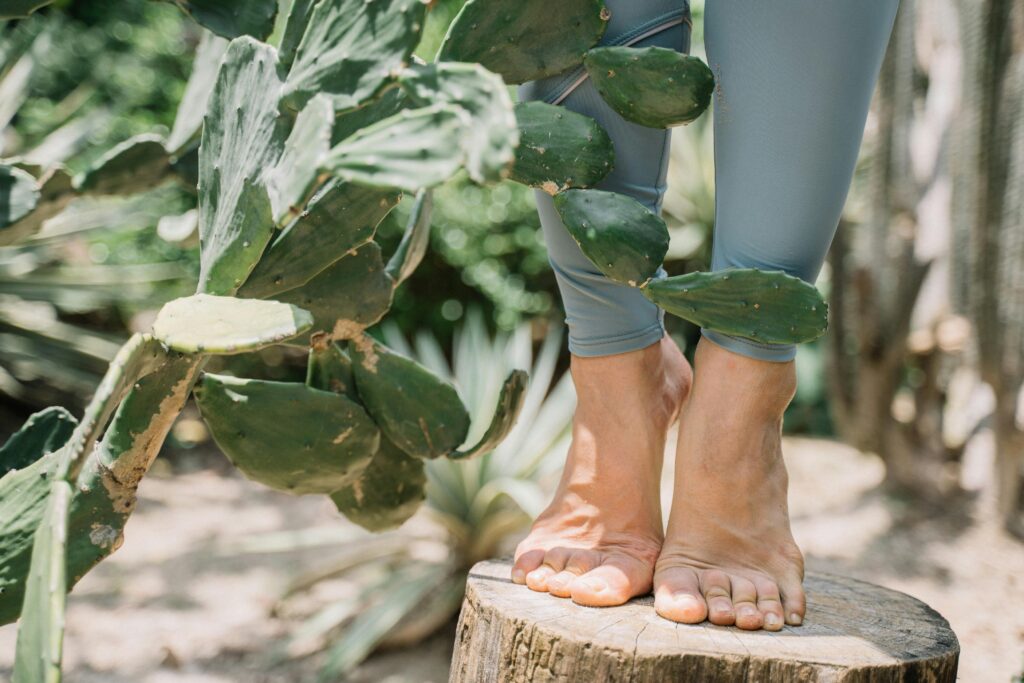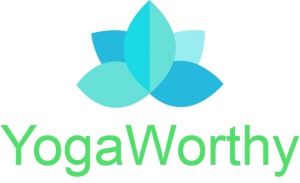Introduction
Starting yoga at home is easier than you might think! You don’t need a fancy studio, expensive equipment, or prior experience to begin your yoga journey. With just a few simple poses, you can start reaping the benefits of yoga from the comfort of your own space. This guide will walk you through essential yoga poses that are perfect for beginners and can be done at home with minimal setup. Whether you’re looking to improve flexibility, build strength, or simply find a moment of peace in your day, these poses will help you get started. Let’s begin!
Setting Up Your Space
Creating a dedicated space for your yoga practice can make a big difference in your experience:
- Choosing the Right Spot: Find a quiet, comfortable spot in your home where you won’t be disturbed. It could be a corner of your bedroom, living room, or even your backyard. Make sure there’s enough space to stretch out in all directions. Just enough space to lay your yoga mat if you will.
- Basic Equipment: All you really need is your body. And may be a yoga mat for cushioning and grip. Wear comfortable clothing that allows you to move freely. Optional props like blocks or straps can be helpful, but they aren’t necessary when you’re just starting out.
- Creating the Right Atmosphere: To enhance your practice, consider dimming the lights, lighting a candle, or playing soothing music. These small touches can help you relax and focus. But you and your body is all you need for this.
The Importance of Warm-Up
Before diving into the poses, it’s important to warm up your body to prevent injury and prepare for movement:
- Why Warm-Up Matters: Warming up increases blood flow to your muscles, making them more pliable and ready for stretching. It also helps to awaken your mind-body connection, setting the tone for your practice.
- Simple Warm-Up Sequence: Start with gentle neck rolls, moving your head in circles to release tension. Follow with shoulder shrugs to loosen up your shoulders, and finish with gentle twists to warm up your spine. Spend about 5 minutes on your warm-up to ensure your body is ready for the poses.
- Sun Salutations: is popular warm-up sequence when you get there. Till then do the warm ups mentioned above.

Beginner Yoga Poses
Here are some foundational yoga poses to begin your practice at home:
- Pose 1: Mountain Pose (Tadasana)
- Pose 2: Downward-Facing Dog (Adho Mukha Svanasana)
- Description: Start on your hands and knees, with your wrists under your shoulders and your knees under your hips. Tuck your toes under and lift your hips up and back, straightening your legs as much as possible. Your body should form an inverted V shape. Keep your head between your arms and your ears in line with your upper arms. Press firmly into your hands and heels, and keep your spine long.
- Benefits: This pose strengthens the upper body, stretches the hamstrings, calves, and spine, and helps to relieve tension. Great for improving sleep as it relaxes the thigh muscles, lower back and hamstrings.
- Pose 3: Child’s Pose (Balasana)
- Description: From a kneeling position, bring your big toes together and sit back on your heels. Separate your knees about hip-width apart and lower your torso between your thighs. Stretch your arms forward with your palms facing down, or rest them alongside your body. Rest your forehead on the mat and breathe deeply.
- Benefits: Child’s Pose is a gentle stretch for the back, hips, and thighs. It’s a restorative pose that helps reduce stress and fatigue. And great for improving sleep quality.
- Pose 4: Cat-Cow Pose (Marjaryasana-Bitilasana)
- Description: Start on your hands and knees in a tabletop position. As you inhale, arch your back and lift your head and tailbone toward the ceiling (Cow Pose). As you exhale, round your spine and tuck your chin to your chest, drawing your belly in (Cat Pose). Continue to flow between these two poses, matching your breath to your movements.
- Benefits: This sequence increases flexibility in the spine, relieves tension, and helps to warm up the body. This is an incredibly powerful practice. It gives the much-needed workout to the spine, pumps cerebral fluids to the brain. It’s one of the most low key yet powerful practices that could be done by anybody, beginner and seasoned alike.
- Pose 5: Warrior I (Virabhadrasana I)
- Description: Step one foot forward into a lunge position, with your back foot turned slightly out. Bend your front knee, keeping it aligned over your ankle, and straighten your back leg. Raise your arms overhead, palms facing each other, and keep your shoulders relaxed. Hold the pose, then switch sides.
- Benefits: Warrior I builds strength in the legs and core, improves balance, and increases focus and concentration.
- Pose 6: Seated Forward Bend (Paschimottanasana)
- Description: Sit with your legs extended straight in front of you. Inhale to lengthen your spine, and as you exhale, fold forward from your hips, reaching for your feet or shins. Keep your back straight and avoid rounding your spine. If you can’t reach your feet, use a strap around your feet to help.
- Benefits: This pose stretches the entire back of the body, including the spine, hamstrings, and calves. It also calms the mind and improves digestion. Go easy on your self when approaching this. And don’t get discouraged if you don’t get to where want to get in your forward bend. You will get there. Even attempting this pose would give you the benefits mentioned above.
- Pose 7: Bridge Pose (Setu Bandhasana)
- Description: Lie on your back with your knees bent and your feet flat on the floor, hip-width apart. Press into your feet and lift your hips toward the ceiling, keeping your thighs parallel. Interlace your hands under your back and press your arms down for support. Hold the pose, then slowly lower your hips back down.
- Benefits: Bridge Pose strengthens the back, glutes, and hamstrings. It also opens the chest and stimulates the abdominal organs.
Cool Down and Relaxation
After completing your poses, it’s important to cool down and relax:
- Cooling Down: Gradually bring your body back to a resting state by slowing down your movements and focusing on your breath. This helps prevent muscle soreness and allows your heart rate to return to normal.
- Final Relaxation (Savasana): Lie on your back with your legs extended and arms by your sides, palms facing up. Close your eyes and allow your body to fully relax into the mat. Focus on your breath, letting go of any remaining tension. Stay here for 5-10 minutes, enjoying the peace and stillness. Remember this is the most important pose of your yoga practice. Relaxing is your ultimate goal and what better way to do it than giving the entire weight of your body to the ground? Observe the changes to the body. Observe the changes to the breath. And relax.
- Breath Awareness: As you relax in Savasana, bring your attention to your breath. Notice the natural rhythm of your breathing and how it feels in your body. This mindful awareness enhances relaxation and helps you transition back into your day with a calm and centered mind. Remember, breath is your Super Power!

Tips for Consistent Practice
To make the most of your yoga practice, consistency is key:
- Start Slow: Don’t feel pressured to master all the poses right away. Focus on your form and breath, and progress at your own pace.
- Practice Regularly: Try to practice yoga at the same time each day, even if it’s just for 10-15 minutes. Consistency will help you develop a routine and see steady improvement.
- Listen to Your Body: Always pay attention to how your body feels during practice. If something doesn’t feel right, ease out of the pose or skip it altogether. Yoga is about honoring your body’s limits.
- Celebrate Small Wins: Every bit of progress is worth celebrating, whether it’s holding a pose longer, feeling more flexible, or simply showing up on your mat. Acknowledge your efforts and stay motivated.
Conclusion
Yoga is a wonderful way to enhance your physical, mental, and emotional well-being, and you don’t need to leave your home to start reaping the benefits. These beginner poses are a great foundation for your practice, helping you build strength, flexibility, and mindfulness. Remember, yoga is a journey, not a destination. As you continue to practice, you’ll discover new poses, deepen your understanding, and experience the profound effects yoga can have on your life. Some of these effects are immediate, such as feeling light and relaxed.
Ready to dive deeper? Try incorporating these poses into a full beginner sequence or explore additional poses as you become more comfortable. Roll out your mat, take a deep breath, and enjoy your yoga journey. Namaste!

